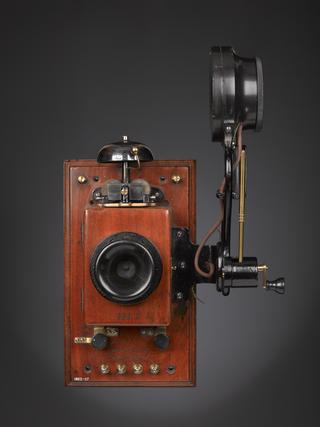
Experimental carbon block microphone, 1878-1890
- maker:
- David Edward Hughes






Experimental microphone having two carbon blocks contained in a glass tube and pressed together by a spring, probably made by David Edward Hughes, England, 1878-1890.
The development of the microphone owes much to David Edward Hughes (1831-1901). Building on the work of Willoughby Smith and Sir William Thomson, Hughes attempted to detect changes in the resistance of wire with sound. He discovered that these changes occurred only when his stretched test wire broke and when he touched the ends together. He found that light but constant pressure was the only essential and in this experiment the pressure of two carbon blocks is maintained by a spring. Hughes did not patent his discoveries, meaning that subsequent inventors were able to make use of them without giving Hughes the credit.
Details
- Category:
- Telecommunications
- Object Number:
- 1922-153
- Materials:
- plastic (unidentified), copper (alloy) and wax
- Measurements:
-
overall: 100 mm x 15 mm diameter, .01 kg
- type:
- microphone
- credit:
- Executors of the late Anna C. Hughes




